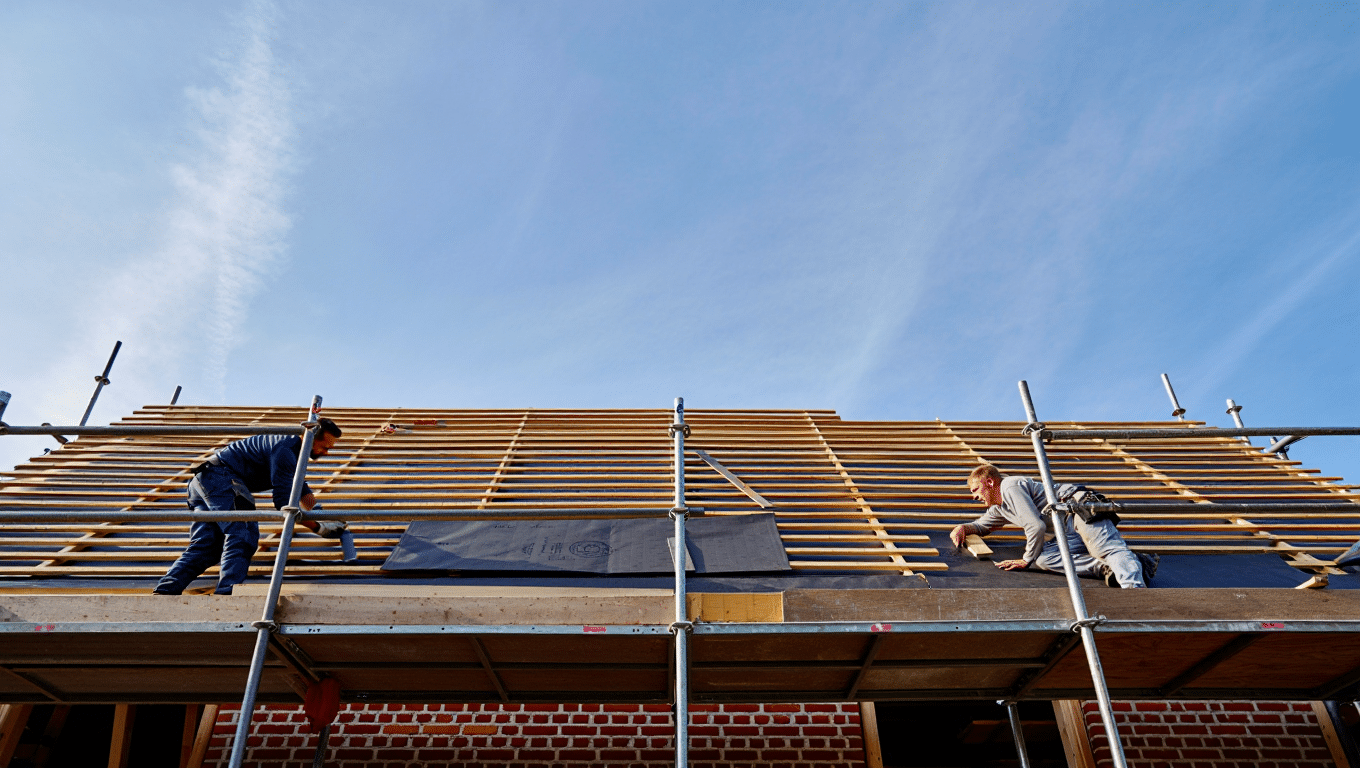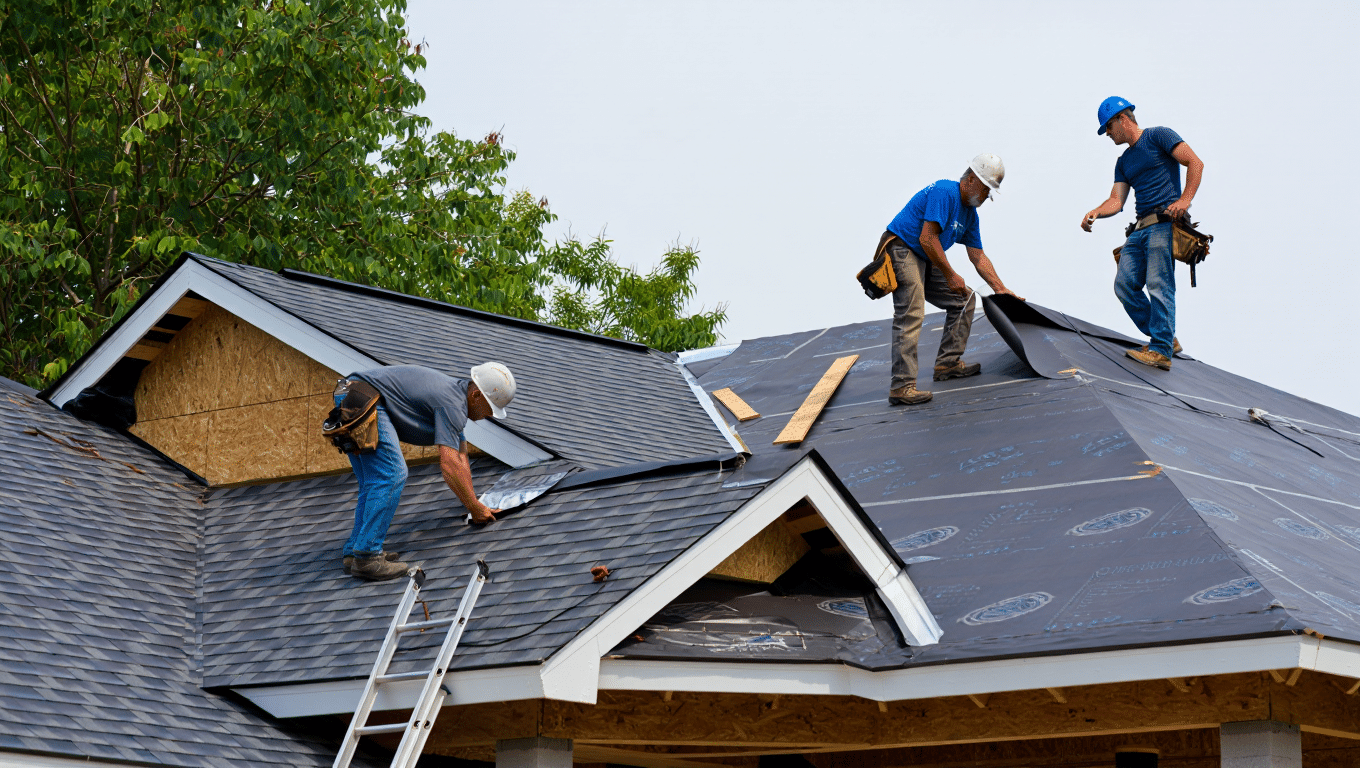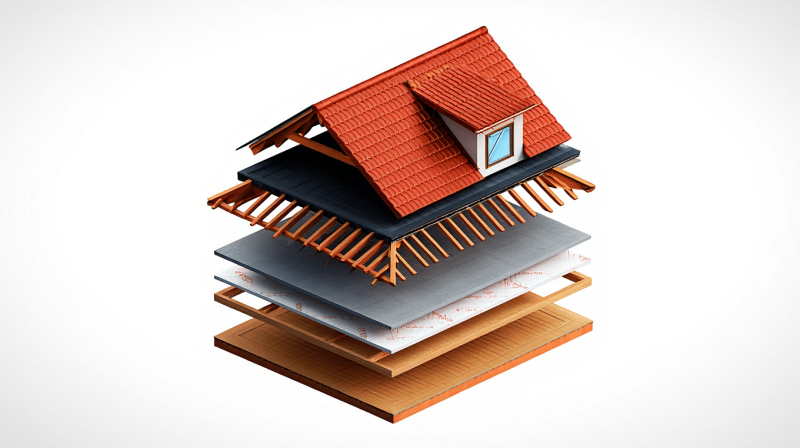Ever stare at your roof and wonder what’s actually up there?
Most homeowners think it’s just shingles, but I’m here to tell you there’s so much more.
Your roof has multiple layers working together, and knowing these basic roof layers can save you thousands when building, replacing, or fixing problems.
Each layer has a specific job. Miss one, and you’re looking at leaks, damage, or worse. Let me show you what’s really protecting your home above your head.
Why Knowing Each Roof Layer Matters?
Here’s what I’ve learned after years of dealing with roof issues: each layer serves a purpose.
When I explain this to neighbors, they’re always surprised. “What’s under the shingles?” they ask. Well, there’s a whole system working to keep your home dry and comfortable.
Each basic roof layer fights different problems. The shingles block rain and sun. Underlayment stops water that sneaks through.
Decking provides structure. Insulation keeps energy bills low. And yes, you might need multiple moisture barriers depending on your climate.
Skip one layer or cheap out? You’ll pay later. I’ve seen homeowners spend double on fixing problems that proper layering would’ve prevented.
7 Essential Roof Layers Explained in Order

Let me walk you through each basic roof layer from bottom to top. I’ll explain what each one does and why it matters for your home.
1. Roof Deck (Sheathing)
Think of this as your roof’s skeleton. I always tell homeowners it’s like the floor of your attic, but upside down.
Most builders use plywood or OSB (oriented strand board) sheets. This layer holds everything else up. Without solid sheathing, your roof would collapse under the weight of snow, shingles, and weather.
2. Insulation
This layer lives beneath your deck or fits snugly between rafters. I can’t stress enough how much money good insulation saves you. It keeps your house warm in winter and cool in summer.
Poor insulation means your HVAC system works overtime. You’ll feel the difference in comfort and see it in your energy bills.
3. Underlayment (Moisture Barrier)
Here’s your roof’s raincoat. I’ve seen too many homeowners skip this layer to save money. Big mistake. This felt or synthetic sheet protects your deck from water that gets past the shingles. It also prevents mold and rot.
Modern synthetic options last longer than traditional felt, but both work well.
4. Ice and Water Shield
If you live where it freezes, listen up. This self-sealing membrane goes along roof edges and valleys. Ice dams form when snow melts and refreezes at your gutters.
Without this shield, water backs up under the shingles. I’ve seen this cause thousands in damage to ceilings and walls.
5. Starter Shingles
These special shingles run along your roof’s bottom edge. They create a straight line for your first row of regular shingles.
I tell clients they’re like the foundation of a brick wall. They also seal the edges where the wind tries to lift shingles up.
6. Main Roofing Material (Shingles or Tiles)
This is what everyone sees from the street. Your shingles or tiles do the heavy lifting against rain, wind, and sun. Asphalt shingles are most common because they’re affordable and work well.
Metal, clay, and slate cost more but last longer. Choose based on your budget and local weather.
7. Flashing and Ridge Vent Elements
Flashing seals the tricky spots where your roof meets chimneys, walls, or valleys.
I always check these areas first during inspections. Ridge vents run along your roof’s peak. They let hot air escape from your attic. Good ventilation prevents ice dams and keeps your roof lasting longer.
Smart Add-Ons for Better Roofing Performance
Beyond the basic roof layers, I always recommend these extras to homeowners who want their roof to last longer and perform better. They’re not required, but they make a real difference.
| Add-On | What I Tell Homeowners | Best For | My Honest Take |
|---|---|---|---|
| Extra Waterproofing Membranes | Think of it as double insurance | High-rain areas, flat sections | Worth it if you get heavy storms |
| Ventilation Systems | Your attic needs to breathe | Hot climates, ice dam prevention | This saves money long-term |
| Fascia and Soffit Boards | The finishing touches that matter | Complete weather protection | Often forgotten but prevents rot |
When to Upgrade or Replace Layers

Knowing when to fix or replace roof layers saves you money and stress. I’ve helped many homeowners make these tough decisions. Here’s what I look for during inspections.
Signs Your Layers Need Attention:
1. Roof Deck: Look for sagging areas, bouncy spots when walking, or visible cracks from below. Water stains on your ceiling often mean deck problems. If more than 30% shows damage, I recommend full replacement.
2. Insulation: Check your energy bills. Big jumps in heating or cooling costs signal insulation problems. Also, look for ice dams in winter – they often mean poor insulation and ventilation.
3. Underlayment: You can’t see this layer easily, but curled shingle edges or granules in gutters hint at problems. Most underlayment lasts 15-25 years.
4. Shingles: Missing granules, cracked edges, or curling corners mean replacement time. Asphalt shingles typically last 20-30 years.
Best Timing for Roof Work:
I always tell clients to plan roof work for late spring or early fall. The weather’s mild and contractors aren’t swamped. Avoid winter unless it’s an emergency – cold makes materials brittle.
Partial vs. Full Replacement:
Replace just one layer if the damage stays localized. But if multiple layers show wear, full replacement often costs less than piecemeal fixes. I’ve seen homeowners pay twice by doing partial work first.
To Conclude
Now you know what’s really protecting your home. These basic roof layers aren’t just construction jargon anymore.
You understand why each one matters. When contractors start talking about underlayment or ice shields, you’ll know exactly what they mean.
Ask questions during estimates. Make sure nothing gets skipped. Your roof is a system, not just shingles thrown on top. Each layer has a job to do.
Next time you look up at your roof, you’ll see it differently. That’s the confidence every homeowner deserves.







